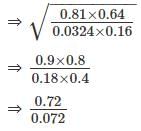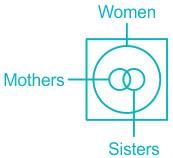Directions: Read the following passage and answer the question that follows:
One well-known description of parenting styles is based on the research of Diane Baumrind. Her early work focused on a careful longitudinal study of 100 (mostly European American, middle-class) preschool children. Through observation of children and parents and interviews with parents. Baumrind and the other researchers who built on her findings identified four parenting styles based on the parents' high or low levels of warmth and control.
Authoritative parents (high warmth, high control) set clear limits, enforce rules, and expect mature behavior. But they are warm with their children. They listen to concerns, give reasons for rules and allow more democratic decision-making. There is less strict punishment and more guidance Parents help children think through the consequences of their actions. Authoritarian parents (low warmth, high control) seem cold and controlling in their interactions with their children. The children are expected to be mature and to do what the parent says, "Because I said so" There is not much talk about emotions. Punishments are strict, but not abusive. The parents love their children, but they are not openly affectionate.
Permissive parents (high warmth, low control) are warm and nurturing, but they have few rules or consequences for their children and expect little in the way of mature behavior because They are just kids". Rejecting/Neglecting/uninvolved parents (low warmth, low control) don't seem to care at all and can't be bothered with controlling, communicating or teaching their children. Authoritarian, authoritative and permissive parents love their children and are trying to do their best; they simply have different ideas about the best ways to parent.
Q. Uninvolved parents:
A. do not show warmth towards their children
B. are non-communicative with their children
C. do not care for their children
D. are affectionate towards their children
E. do not bother about controlling their children
Choose the correct answer from the options given below:





 is equal to
is equal to 


 is equal to
is equal to 
















